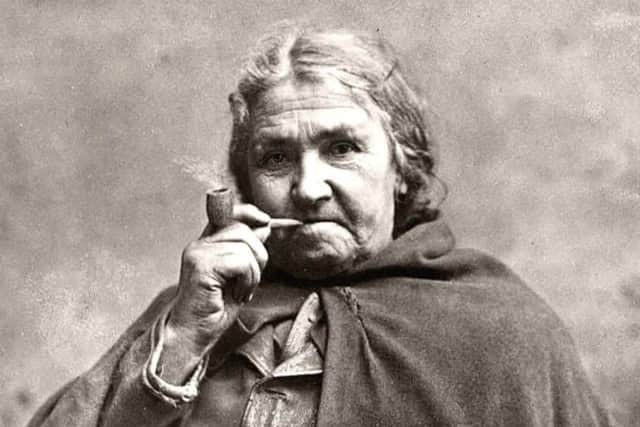Remembering ‘Big Rachel’: The hardest woman in Glasgow who smoked a pipe, laboured in shipyards, and was called in to end a riot
and live on Freeview channel 276
Standing at six foot and four inches tall - and reportedly weighing around 17 stone - Rachel Hamilton was an Irish immigrant who settled with her husband in Partick in the mid-19th century.
She quickly became well known and respected in the community for her impressive strength and resolve - proving herself to the male-dominated workforce. Rachel was born in 1829 and took no cheek from anyone - any men that thought themselves brave enough to challenge her place in the labour force would quickly find themselves put in their place as they were hurtled face first into the River Clyde.
Advertisement
Hide AdAdvertisement
Hide AdShe was rarely seen not smoking her pipe - only while she was engaged in hard physical graft. Hamilton worked as a labourer in Tod and MacGregor shipbuilders, as a forewoman navvy at the Jordanhill Brickworks, and latterly as a farm worker at Anniesland - in all of those roles she was the only woman labouring on-site.
It was her reputation that led to the police force seeking her out to help quell the community during the Partick Riots in August 1875. Rachel led the way in helping to drive away the mob from the burgh who had continued to gather in the streets following a weekend of civilian violence and clashing with police.
Rachel was sworn in as special constable during the weekend of civil unrest at the age of 46. Hamilton emigrated to Glasgow from Ireland - and was a part of the growing Irish community in Glasgow in the mid nineteenth century.
The Irish community celebrated the 100th anniversary of the birth of Irish political leader Daniel O’Connell in the streets of Partick. O’Connell is venerated to this day in Irish culture, hailed as a great liberator of Irish people as he played a pivotal role in gaining Ireland’s Catholic Emancipation in 1829. It was at this time in Glasgow that sectarianism began to take it’s roots in the city - which was compounded when the Irish Catholic community fleeing the Irish famine of the 1840s began to integrate into the predominantly Protestant Glasgow.
Advertisement
Hide AdAdvertisement
Hide AdIn Glasgow, the Irish Question - whether Home rule should be granted - was the major political issue of the day. In Partick, the residual mood of the O’Connell rally in Glasgow Green darkened as around 900 men paraded west into the burgh where a large crowd, including members of the the Orange Lodge and its supporters, quickly rallied.
Weapons such as sticks, stones and other missiles were carried on both sides, reports of the day said. Violence broke out after one of the marchers struck one of the bystanders, who then smacked his attacker in the face.
“This was the signal for a free fight between the processionists and the crowd,” reported the Glasgow Herald.
Among those struck was Police Constable Donald Munro, who was hit with a stick on his head and cheek ‘to the great effusion of his blood and severe injury of his person’, according to a court report. Fighting peaked and waned throughout the night, with a new wave of rioting breaking out the next afternoon.


Advertisement
Hide AdAdvertisement
Hide AdAgain the neighbourhood was terrorised as men cut through the streets, hurling stones and other missiles through the windows of homes - and shops were also targeted with many smashed up or destroyed. It was at this point the Partick Police force had to call in the big guns - ‘Big Rachel’ was among 29 of the hardest nuts the West End had to offer that were swiftly deputised.
Rachel led the way with the other special constables and police officers - and the sight was enough to drive the mob back across the Kelvin and towards the city centre. The violence dissipated, and Big Rachel’s name travelled far beyond the burgh of Partick - securing her place in the annals of Glasgow history.
Even death itself was afraid of Big Rachel - she died in 1899 at the age of 70, at a time when women in Glasgow were not expected to see beyond the age of 50.
Comment Guidelines
National World encourages reader discussion on our stories. User feedback, insights and back-and-forth exchanges add a rich layer of context to reporting. Please review our Community Guidelines before commenting.
